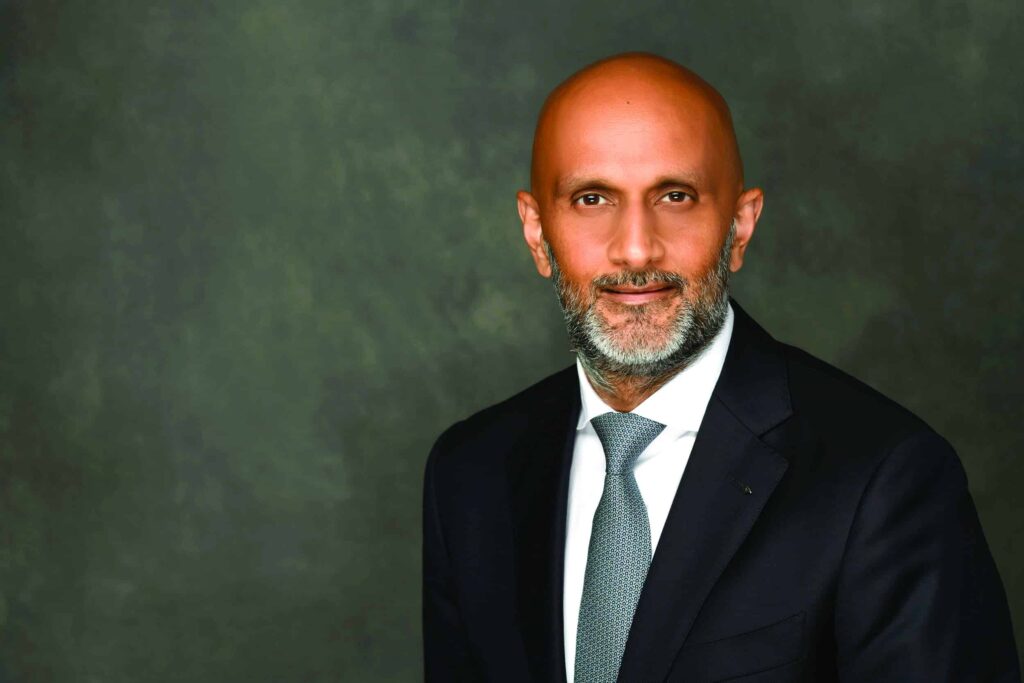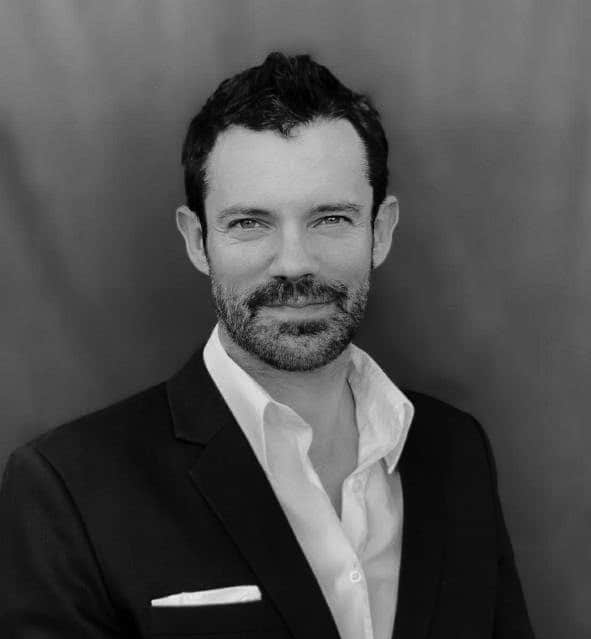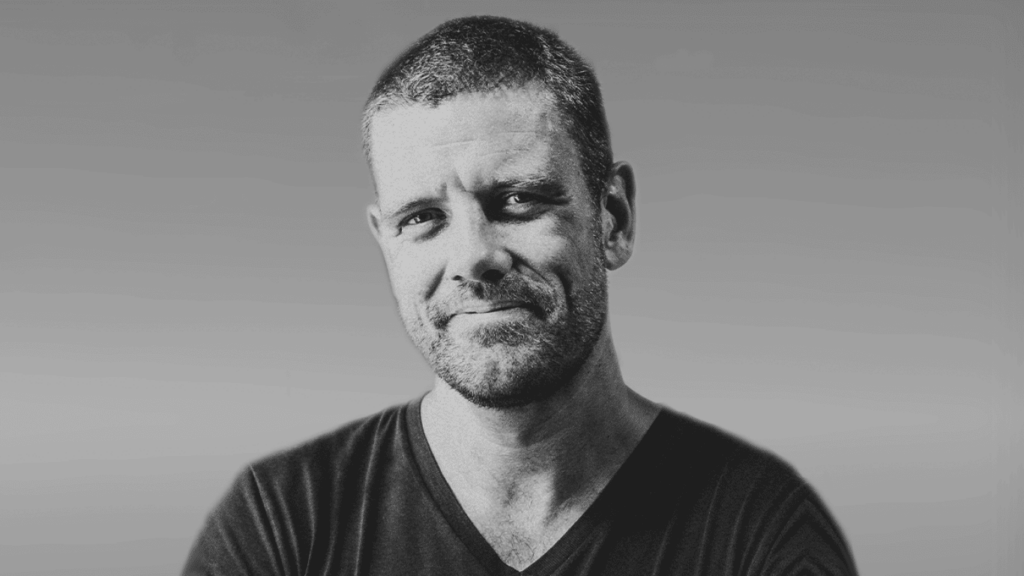
With Raj Mathur, Co-Head of Advanced Execution Services (AES), Asia Pacific, Credit Suisse; Paul Howard, Institutional Sales Director, BlockFi Asia; Chris Bland, Head of Crypto Business Development, Tower Research Capital, and Ben Radclyffe, Managing Director, Amber Group
Credit Suisse hosted its 25th Asian Investment Conference in Hong Kong this year, which had the theme of metamorphosis. Transformation is an appropriate topic as one catalyst over the last quarter of a century was the electronification of markets and the development of algorithmic trading.

Raj Mathur, Co-Head of Advanced Execution Services (AES), Asia Pacific at Credit Suisse compared that change to the current environment as traditional equities markets may be transformed by crypto markets, tokens, smart contracts, and private keys powered by cryptography and blockchain. He described the industry becoming fintech pioneers before the term had even been coined.
“Advances in technology coupled with industry collaboration on standardized protocols like FIX, gave birth to a new medium for intermediaries to provide automated execution services to financial consumers,” Mathur said. “This movement pushed more control and choice back into the hands of the buy side, and competition and innovation have continued to provide more choice and improved execution outcomes.”
Mathur moderated a panel, ‘Crypto connections – what is the future of markets’, at the conference which comprised of well-known participants from traditional finance, or TradFi, who have moved over to crypto firms and who are using their extensive sell-side experience in equities to provide a bridge between the nascent, rapidly growing asset class and traditional institutional requirements. Can crypto markets help the industry understand the future of traditional markets, and at the same time what can crypto markets learn from the experiences of traditional markets over the past 25 years?
The three panelists were Ben Radclyffe, formerly Head of Equities Electronic Trading, APAC at Deutsche Bank and now Managing Director at Amber Group, a fintech unicorn providing digital asset services and infrastructure; Chris Bland, previously in prime brokerage at UBS and now Head of Crypto Business Development at Tower Research Capital, a high-frequency trader and market-making firm; and Paul Howard, who used to work in electronic trading at Goldman Sachs and is now Institutional Sales Director at BlockFi Asia, a crypto borrower and lender to institutions such as hedge funds, proprietary trading firms, exchanges and market makers.
Howard said many jobs in TradFi are immediately portable to the crypto world such as algo trading, sales, compliance and operations and would help bridge the two worlds. “We are in dire need of people with experience in all these areas who can apply their mindset to a new asset class,” he added.
MARKETS
When comparing the connections between the new markets and traditional equities, Howard said the crypto ecosystem will develop in five phases. The first phase, which has been completed, is spot trading for Bitcoin and Ethereum, followed by the advent of derivatives and then integration with digital currencies.
Howard said: “I think we are between the latter two phases at the moment. Phase four is going to be regulation of the industry and the accessibility for institutions to bring in their balance sheets.”

The fifth and final phase is the digitisation of supply chains across infrastructure and logistics companies as they adapt to use the new technology and the efficiencies it will bring. “Everything from execution through to settlement, whether that is in equities, or buying a Christmas present for the kids, that is all going to be on a blockchain in the next 25 years,” Howard added.
Bland expects that the first changes caused by blockchain in TradFi will be the faster movement of cash because of the use of central bank digital currencies (CBDCs) or private stablecoins that have already been launched by some large global banks.
“This is the lowest hanging fruit that is the easiest to implement and has a big tangible improvement in efficiency,” Bland said.
For example, Hong Kong Stock Exchange has a T+2 regime where equities take two days after a trade to complete the settlement process. The need for exchanges will not disappear but putting tokenized securities on a blockchain allows instantaneous settlement so funds can immediately be put into different projects and earn a yield.
“There are so many inefficiencies in traditional finance and I think we can do much better in the 21st century,” added Howard. “We can use liquidity, rather than having it tied up.”
In addition, the settlement process on a blockchain has far more transparency as participants can click on a web link and immediately see every point in a transaction according to Howard, with trading and settlement taking place 24×7. Increased efficiency and transparency are concepts that can also be used for the benefit of traditional markets.
Radclyffe said: “We are taking out the centralized database of ownership of securities and distributing it across a digital ledger which means you can instantly move digitized assets around the world, which can be applied to assets such as equities or foreign exchange. Instant settlement is incredibly valuable and everything else will follow.”
FIX messaging is important in traditional securities and so can offer standardization in execution and post-trade and a bridge between the old and new asset classes. As a result, FIX is due to launch standards for the digital asset space.
ACTORS
One of the big differences with traditional finance is the ability of crypto users to set up decentralized exchanges (DEXs). Howard described DEXs as allowing users to be their own bank with control of their wallet, to put a pool of liquidity into the market and to be a market maker. Some services allow the launch of a DEX through just pressing a button and a Gmail account.
He expects DEXs to complement centralized exchanges. For example, Uniswap is the largest DEX operating on the Ethereum blockchain
“DEXs are often more nimble because many are coded with open source,” Howard added. “There will be opportunities to arbitrage between CEXs and distributed or decentralized order books.”
Radclyffe said the successful DEXs that attract liquidity will do incredibly well.
Bland described the Serum DEX, which is built on the Solana blockchain. He said Solana was launched last year and grew massively as block times were reduced to microseconds from between five to 10 seconds. Solana could build another bridge to traditional finance as their high performance on-chain capabilities allow for liquidity providers to perform active liquidity provision, which was not possible in decentralized finance (DeFi) on the slower Ethereum blockchain. Therefore, Bland expects to see increasing convergence between TradFi and DeFi.
INNOVATION
The panelists highlighted developments that have already taken place in crypto and digital assets to provide a bridge to TradFi, such as exchanges Binance and FTX listing synthetic stock tokens. Bland said: “There’s no technological impediment but incumbents use older technology and the investment required is going to take a lot of work and coordination. It is not a question of if, but when, these things can be put into place.”
He highlighted that the rapid pace of innovation in crypto is due to collaboration and the use of open source, which allows people to copy code and build on previous developments – which could also be beneficial in traditional markets.

“No one needs to reinvent the wheel,” said Bland. “It is a bit of the Silicon Valley tech ethos coming into the finance world which is to build quickly and break things.”
For example, Fireblocks is building the Digital Asset Transfer Network, the digital asset custodian’s version of the SWIFT payment system in traditional finance, while IX Swap is a platform that offers security token offerings (STOs) and access to liquidity. Crypto exchange BitMEX introduced perpetual swaps in 2016, which are similar to a futures contract, but do not have expiration dates and so eliminate the need to constantly re-establish a long or short position.
REGULATION
However, Radclyffe noted that many jurisdictions still need to put legal frameworks in place for tokenized assets. For example, if there is a dispute over tokenized real estate, there needs to be an arbitration mechanism.
Radclyffe said: “The technology exists but we still need the underlying legal and regulatory frameworks which support traditional assets.”
In the US, President Biden has issued an Executive Order on Ensuring Responsible Development of Digital Assets to push regulators to develop a regulatory framework for the new asset class. At the moment digital assets fall under a patchwork of regulation between state regulators, federal bodies and the CFTC, which is responsible for regulating commodity derivatives while the SEC regulates securities. A bipartisan group of Senators has proposed that the CTFC should oversee spot crypto markets. In contrast, Hong Kong’s Securities & Futures Commission is working on a licensing regime for virtual assets and Singapore has passed a new Financial Services & Markets Bill which includes digital assets.
Bland said regulators around the world are trying to repurpose old regulation to a 21st century invention so there needs to be a bit of thought around the right approach, especially in relation to the transparency around stablecoins.
“The Senate hearings with crypto industry participants shows they are looking to work with regulators and help them understand this space,” he added. “No-one wants to see retail traders defrauded or losing money so the whole industry wants to, and will hopefully, help in the future.”
GROWTH PROSPECTS
Radclyffe predicted that each person in the audience will be working in digital assets in the future unless they leave the industry or they retire. Firms will need to have a strategy on the eventual digitisation of assets, regardless of whether they start to trade crypto, and they need an education process.

“Electronification was a really good example as you couldn’t go straight from phoning people to being fully algorithmic,” Radclyffe added. “You have to go through that learning process and slowly implement your strategy over a period of time – but start learning as soon as possible.”
He continued that companies that do not have a digital asset strategy in the next 12 months will be left behind, much like companies who did not have an internet strategy 25 years ago.
Mark Twain is reputed to have said: “History doesn’t repeat itself, but it often rhymes.” The experience of the implementation of electronic trading in equities may not be repeated in the same way but there are many lessons that have been learnt that can be used as a bridge to strengthen both traditional and new asset classes, to the benefit of both.




